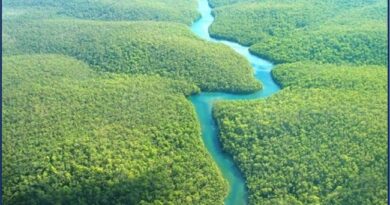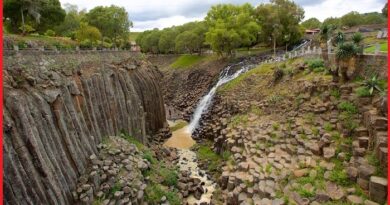Sailing stones- The weirdest phenomenon where rock moves in dry land
Sailing stones Death valley
Death Valley in California is one of the weirdest places in the world owing to the phenomenon of the Sailing Stones. In 1915 people discovered a track here that indicated that a particular stone had moved from its place in the dry land. This sailing stone had immediately been recorded and the locals began further study so that they could learn more about this mystery.
The Sailing Stones Death Valley is a natural phenomenon where large rocks, some weighing up to hundreds of pounds, move across a dry lakebed called Racetrack Playa, leaving long tracks behind them. The rocks seem to move on their own, without any visible external force causing them to move. This mystery has intrigued scientists and visitors for many years.
Several theories have been proposed to explain the movement of rocks. One theory suggests that strong winds push the rocks across the playa when the surface is wet and slippery from rain or melting ice. Another theory proposes that the rocks move when a thin layer of ice forms on the playa and then cracks, allowing the wind to move the rocks.

Scientists have conducted various studies to understand this phenomenon. They have used GPS tracking, time-lapse photography, and other techniques to track the movement of the rocks. In recent years, scientists have found that a combination of wind and ice is responsible for the movement of the rocks. When the playa is wet and slippery, the rocks can move with the slightest push from the wind.
Why do the sailing stones move
The exact cause of the movement of the Sailing Stones Death Valley was not fully understood until recently. However, scientists now believe that a combination of wind and ice is responsible for the movement of the rocks. The movement of the rocks is not constant, and some of them may not move for years. However, when the conditions are just right, the rocks can move several meters or more.
The Sailing Stones of Death Valley are an excellent example of the complex interplay between the forces of nature and the formation of unique geological features. While we now have a better understanding of why the rocks move, the mystery and wonder of this natural phenomenon continue to captivate and fascinate scientists and visitors alike.
Time-lapse sailing stones California
Time-lapse photography has been used by scientists to capture the movement of the Sailing stones Death valley. By setting up cameras that take pictures at regular intervals over an extended period, scientists have been able to observe the movement of the rocks in a more detailed way.
One of the most famous time-lapse videos of the sailing stones was created by researchers Richard Norris and James Norris, who used a network of GPS units, time-lapse cameras, and weather stations to capture the movement of the rocks. They set up the equipment on the playa in 2011 and monitored it for several years.
Their video shows the rocks moving across the playa, leaving long tracks behind them. The movement of the rocks is slow, and it can take months or even years for them to move a significant distance. However, the time-lapse footage reveals the complex interplay between wind, ice, and the rocks that causes them to move. The time-lapse footage has helped scientists gain a better understanding of the movement of the rocks and has led to the development of more accurate theories about why they move. It also provides a fascinating and unique glimpse into the natural world and the mysteries that it holds.
Also, read- The Fantastic Sculpture Devil’s Golf Course in Death Valley
Death valley national park California
Death Valley National Park is a protected area located in the eastern part of California, USA. It is the largest national park in the contiguous United States, covering an area of approximately 3.4 million acres. The park is known for its unique and extreme natural features, such as its hot and arid climate, the lowest point in North America, and its spectacular geologic formations. Death Valley National Park is also home to a diverse range of flora and fauna, including rare and endangered species.

The park features many scenic drives and hiking trails, allowing visitors to explore its natural wonders. Popular attractions include the Mesquite Flat Sand Dunes, Zabriskie Point, Badwater Basin, and Artist’s Palette. Aside from its natural attractions, the park also has a rich cultural history, dating back thousands of years. Visitors can explore historic sites and learn about the park’s human history through interpretive programs and exhibits.
In addition to recreational activities, Death Valley National Park offers many opportunities for scientific research, with ongoing studies of its unique geology, climate, and ecosystems.
How to get to Sailing stones Death valley
Getting to the Sailing stones Death Valley requires some planning and preparation. The stones are located in a remote area of Death Valley National Park, and access can be challenging due to rough roads and extreme weather conditions. To Reach the place one needs to Enter Death Valley National Park through the West Entrance or the North Entrance. Drive to the town of Panamint Springs and take the Panamint Valley Road south. Turn onto Racetrack Valley Road, which is a rough dirt road, and Follow Racetrack Valley Road for about 43 km. until you reach Racetrack Playa. From the parking area, it is about a 5 km walk to the Sailing stones Death valley.



